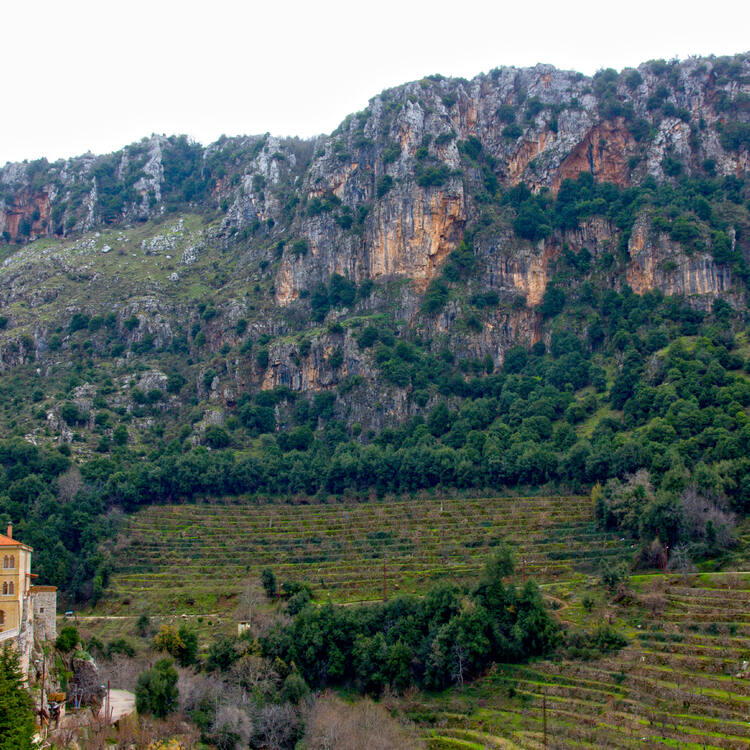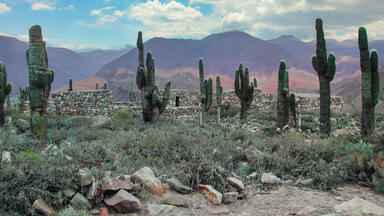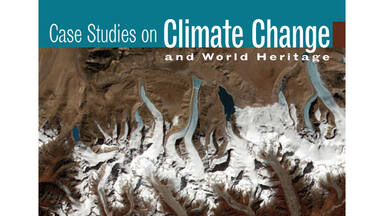Ouadi Qadisha (the Holy Valley) and the Forest of the Cedars of God (Horsh Arz el-Rab)
Ouadi Qadisha (the Holy Valley) and the Forest of the Cedars of God (Horsh Arz el-Rab)
The Qadisha valley is one of the most important early Christian monastic settlements in the world. Its monasteries, many of which are of a great age, stand in dramatic positions in a rugged landscape. Nearby are the remains of the great forest of cedars of Lebanon, highly prized in antiquity for the construction of great religious buildings.
Description is available under license CC-BY-SA IGO 3.0
Ouadi Qadisha ou Vallée sainte et forêt des cèdres de Dieu (Horsh Arz el-Rab)
La vallée de la Qadisha est l'un des plus importants sites d'établissement chrétien au monde, et ses monastères, souvent très anciens, s'inscrivent dans un extraordinaire paysage accidenté. On trouve non loin de là les vestiges de la grande forêt de cèdres du Liban, très prisés jadis pour la construction de grands édifices religieux.
Description is available under license CC-BY-SA IGO 3.0
وادي قاديشا أو الوادي المقدس وحرش أرز الرب
يُعتبر وادي قاديشا من أهمّ المواقع للتأسيس المسيحي في العالم. فأديرة الرهبان القديمة بمعظمها تتواجد في وسط طبيعةٍ خلابة. وقريبًا منها، نجد آثار غابة أرز لبنان الكبيرة، التي كانت مطلوبةً جدًا في الماضي لبناء العمارات الدينيّة الكبيرة فيها.
source: UNESCO/CPE
Description is available under license CC-BY-SA IGO 3.0
夸底•夸底沙(圣谷)和神杉林
圣谷是基督教早期世界上最重要的修道士聚居地。它的许多修道院年代已十分久远,引人注目地坐落在崎岖不平的地形中,附近是黎巴嫩山林遗址,这里的树木为古代宗教建筑提供了优质的木材。
source: UNESCO/CPE
Description is available under license CC-BY-SA IGO 3.0
Священная Долина (Уади-Кадиша) и Божественная Кедровая Роща (Хорш-Арз-эль-Раб)
Долина Кадиша – это одно из наиболее значимых раннехристианских монашеских поселений в мире. Его монастыри, многие из которых очень древние, великолепно вписаны в гористый ландшафт. Поблизости уцелели остатки большого массива ливанского кедра, высоко ценившегося в древности как материал для строительства крупных культовых сооружений.
source: UNESCO/CPE
Description is available under license CC-BY-SA IGO 3.0
Valle Santo (Uadi Qadisha) y Bosque de los cedros de Dios (Horsh Arz Al Rab)
El Valle de Qadisha fue el escenario de uno de los primeros y más importantes asentamientos monásticos cristianos del mundo. Sus monasterios –antiquísimos en gran parte– se yerguen espectaculares en medio de un paisaje accidentado. En sus cercanías se encuentran los vestigios del gran bosque de cedros del Líbano, sumamente apreciados en la Antigüedad para la construcción de grandes edificios religiosos.
source: UNESCO/CPE
Description is available under license CC-BY-SA IGO 3.0
カディーシャ渓谷(聖なる谷)と神のスギの森(ホルシュ・アルツ・エル-ラーブ)
カディーシャ渓谷は自然と人類とが一体となった共生の場であり、世界における最も重要な初期キリスト教修道僧の修行地の一つである。やがてマロン派修道僧の拠点となったこの懸崖の地は、迫害を逃れる他のキリスト教派のシェルターともなった。長い風雪を経た多くの修道院は、まさに目をみはるような険しい岩山の景観の中に位置している。近くにはレバノン杉の大森林があり、古代における宗教的建造物の建材として用いられていた。source: NFUAJ
Ouadi Qadisha (de Heilige vallei) en het Bos van de ceders van God (Horsh Arz el-Rab)
De Qadisha vallei en het Bos van de ceders van God (Horsh Arz el-Rab) bevinden zich in het noorden van Libanon. De Qadisha vallei is een van de belangrijkste vroegchristelijke kloosternederzettingen ter wereld. De kloosters – waarvan er vele heel oud zijn – staan op indrukwekkende plekken in een ruig landschap. In de buurt zijn de overblijfselen van het grote cederbos van Libanon te vinden, ceders werden in de oudheid erg gewaardeerd voor de bouw van grote religieuze gebouwen. De rotsen van de Qadish vallei hebben door de eeuwen heen gediend als een plaats voor meditatie en toevlucht.
Source: unesco.nl
Outstanding Universal Value
Brief synthesis
Ouadi Qadisha is one of the most important settlement sites of the first Christian monasteries in the world, and its monasteries, many of which of great age, are set in an extraordinarily rugged landscape. Nearby are the vestiges of the great cedar forest of Lebanon, highly prized in ancient times for the construction of great religious buildings.
The Qadisha Valley site and the Forest of the Cedars of God (Horsh Arz el-Rab) are located in northern Lebanon. The Qadisha Valley is located North of Mount-Lebanon chain, at the foot of Mount al-Makmel and West of the Forest of the Cedars of God. The Holy River Qadisha, celebrated in the Scriptures, runs through the Valley. The Forest of the Cedars of God is located on Mount Makmel, between 1900 and 2050 m altitude and to the East of the village of Bcharré.
The rocky cliffs of the Qadisha Valley have served over centuries as a place for meditation and refuge. The Valley comprises the largest number of monasteries and hermitages dating back to the very first spread of Christianism. The main monasteries are those of St Anthony of Quzhayya, Our Lady of Hauqqa, Qannubin and Mar Lichaa. This Valley bears unique witness to the very centre of Maronite eremitism. Its natural caves, carved into the hillsides - almost inaccessible - and decorated with frescoes testifying to an architecture specifically conceived for the spiritual and vital needs of an austere life. There exist numerous terraces for growing grain by the monks, hermits and peasants who lived in the region; several of these terraces are still under cultivation today.
Linked to the Qadisha Valley through historic reference and contiguity, the Forest of the Cedars of God is the last vestige of antique forests and one of the rare sites where the Cedrus lebani still grows, one of the most valued construction materials in the antique world and cited 103 times in the Bible.
Criterion (iii): Since the beginnings of Christianity, the Qadisha Valley has given shelter to monastic communities. The trees of the cedar forest are the survivors of a sacred forest and one of the most prized building materials in ancient times.
Criterion (iv): The rugged Valley has long been a place of meditation and refuge. It comprises an exceptional number of coenobite and eremitic monastic foundations, some of which date back to a very ancient period of the expansion of Christianity. The monasteries of the Qadisha Valley are among the most significant surviving examples of the strength of the Christian faith.
Integrity (2009)
The Qadisha Valley comprises all the caves, monasteries and cultivated terraces that are associated with the activities from a very early phase of Christianity. The cultural elements of the site are for the most part existent, but their state of conservation varies: some religious buildings are dilapidated, their stability is precarious and with a few exceptions, the frescoes have almost all disappeared. The visual integrity of the Valley is disturbed by the increase in human settlements in the vicinity, especially on the ridges surrounding the Valley as well as by the uncontrolled visitor flow. The Reserve of the Forest of the Cedars of God is located within the boundaries of the property and is well preserved. However, its visual integrity is affected by souvenir shops on one side and by an illegal construction on the eastern side. The entrance to the Forest should be monitored and the illegal building should be demolished, in particular as it is located in an area subject to reforestation.
Authenticity (2009)
The original character of the ancient monastic troglodyte habitats is still visible. The monastic architecture and the agricultural habitats of the Valley have not yet been modified or altered by substitution interventions. In addition, they have not been hampered by activities incompatible with the spirit of the place. Over time, some sites have lost certain of their characteristic elements such as frescoes or structures. The global authenticity of the Christian vestiges is consequently vulnerable. The Forest of the Cedars of God has maintained its authenticity as related to the survival of its trees.
Protection and management requirements (2009)
The Qadisha Holy Valley is protected by Ministerial Orders 13/1995 and 60/1997 enacted by the Ministry of Culture, by Order 151/95 enacted by the Ministry of the Environment, and by the Antiquities Law 166/1933. A new town and building plan has been approved. Currently, the Directorate General of Antiquities (DGA) and the Ministry of the Environment are the official responsible organisms of the property. The COSAQ, the body comprising the land owners (Maronite Patriarchate, religious orders etc.), the regional municipalities and private associations, take care of the management of the property. Two coordination commissions, administrative and scientific, should be created to assist in the management of the property and this included in the framework of the management plan submitted to the World Heritage Centre at the time of inscription. This management plan was updated in 2007-2008. The creation of a Regional Park and the development of a detailed management plan to ensure the integrity and authenticity of the property is recommended by the World Heritage Committee. A programme of interventions will enable, among others, the implementation of work on the built heritage, improvement of the road network and that concerned with excursions, strengthen security and control in the Valley, support ecological tourism and biological agriculture, written studies and creation of databases.
The area of the Cedars is considered a national natural site and is subject to the following protection texts: Law 8/7/1939 concerning landscapes and natural sites in Lebanon; Decree NI434 of 28/3/1942 that indicates the geographical boundaries and standards of the Cedar Region; Decree K/836 of 9/1/1950 concerning the organization and development of the Cedar Region; Decree 52 of 7/11/2005 concerning the organization and development of the Cedar Region; Decree Law 558 of 24/7/1996 concerning the protection of the forest of Lebanon under the aegis of the Ministry of Agriculture. The protection of this site is ensured by the joint action of the Maronite Patriarchate, the Municipality of Bcharré, the Lebanese army and the Committee of the Friends of the Cedar Forest. The Ministry of Agriculture and the DGA are the official managers responsible of the property. The Committee of the Friends of the Cedar Forest manages the Forest in accordance with an Action Plan. Some protection measures must be envisaged, notably to clear the areas around the Forest and the removal to a more appropriate area of the souvenir kiosks. A continuous ecological recording is indispensable to ensure monitoring and control.




